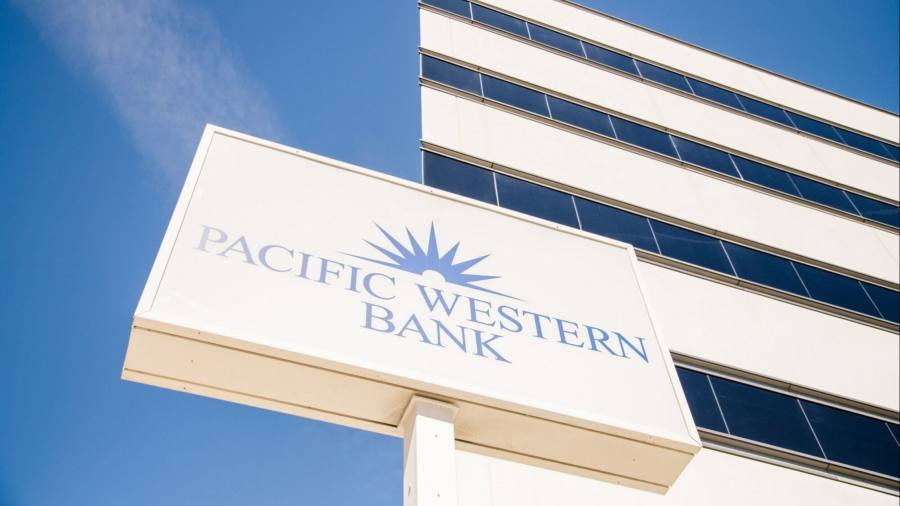The rescue of First Republic this week has failed to arrest a sell-off in regional bank shares, which plunged on Tuesday morning as investors digested JPMorgan’s takeover of the troubled Californian lender.
Trading in PacWest, seen as one of the weakest of the midsized regional banks, was briefly halted for volatility and was down 25 per cent by noon in New York. The fall put PacWest on course for its worst daily decline since March 10, when Silicon Valley Bank’s collapse heaped pressure on the entire sector. Western Alliance was down more than 20 per cent.
Both banks have drawn scrutiny because of their similarities to SVB and First Republic, which were taken over by the Federal Deposit Insurance Corporation after they suffered huge deposit outflows and large paper losses on long-dated assets.
JPMorgan bought First Republic’s deposits and most of its assets on Monday, but shareholders were entirely wiped out.
“They are going from the weakest bank to the weakest bank. And it’s not just the short sellers but it’s the customers as well asking if their deposits are safe,” said Chris Whalen, chair of Whalen Global Advisors. “The market is focusing on the weakest links and looking for banks that are vulnerable.”
A KBW index of regional bank stocks slid more than 5 per cent in morning dealings. Utah-based Zions Bancorp was the biggest faller on the S&P 500 index, dropping 13 per cent.
One banking analyst pointed to a caveat in comments made by JPMorgan Chase chief executive Jamie Dimon after the First Republic takeover. Although he said the rescue of the California bank on Monday “pretty much resolves them all”, he prefaced his remarks with the warning that “there may be another smaller one” to come.
“People are latching on to that comment,” the analyst said.
Michael Metcalfe, head of macro strategy at State Street Global Markets, said “market skittishness is understandable” following the failure of First Republic.
However, he noted that long-term investors had been buying more shares of banks in recent weeks, suggesting “neither panic nor broader contagion”. He added: “The implication is that [Tuesday’s] price action is more speculatively driven.”
Larger bank stocks were falling as well, although not as sharply, with Goldman Sachs and Morgan Stanley each down roughly 2 per cent. JPMorgan dropped about 1.4 per cent.
Banking stocks tend to be highly cyclical and the Bureau of Labor Statistics reported on Tuesday that the number of job openings had fallen to the lowest level since May 2021 while there are mounting fears the US will breach its borrowing limit.
Several top investors and executives have warned about the potential for further fallout from the spate of bank failures.
PGIM chief executive David Hunt told attendees at the Milken Institute conference in Beverly Hills on Monday that “we’re just starting [to see] the implications for the US economy”, while Investcorp co-chief Rishi Kapoor said there was “no doubt that the second- and third-order effect on the banking sector . . . is going to cause constraining financial conditions”.
Regional banks are particularly exposed to commercial real estate, which has recently emerged as an area of concern, because of its exposure to higher interest rates and fears that the prevalence of working from home will reduce demand for offices.
In an interview with the Financial Times over the weekend, Berkshire Hathaway’s Charlie Munger warned that regional banks were “full of” bad commercial property loans.
Investors have been heavily betting on further share declines in some of the midsized banks, with short interest in California-based PacWest particularly high. However, the level of shorting activity is little changed over the past month, according to Markit data.
Mid-sized banks between $100bn and $250bn in assets are also a subject of concern because US regulators have said they plan to tighten supervision and regulatory requirements, which will probably add costs and hit profits for smaller banks.
Concerns over the debt ceiling could also be contributing to bank stock declines, said Casey Haire, equity analyst at Jefferies. “That messes with the [Treasury] yield curve,” he added. “An inverted yield curve is never good for banks.”
Read the full article here




